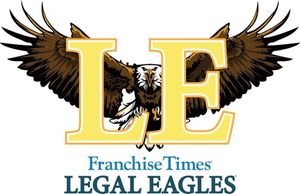It can seem quite daunting when first faced with a commercial lease that is filled with pages of terms and conditions. How does a potential tenant decide the important issues? Most prospective tenants are concerned with the business terms of the lease – what is the rent, what are the additional charges, repairs and maintenance responsibilities? However, the legal issues, if not properly addressed in the lease, can be extremely costly to the tenant.
Common Area Maintenance Charges
The first issue encountered by a commercial tenant is the common area maintenance charges (known as “CAM” charges) passed on to the tenant. It is typical for a landlord to pass on charges incurred for real estate taxes, insurance, exterior maintenance, etc. on the entire building of which the parcel is a part. The formula for calculating those charges can make a significant difference in a tenant’s monthly expenses. Landlords usually like to calculate CAM charges by a fraction in which the numerator is the square footage of the parcel and the denominator is the square footage of the leased space. This formula favors the landlord by having the tenant pay CAM charges for part of the unleased space. By changing the formula to state that the denominator is the square footage of the entire building, or of the leasable space, the tenant is being charged a smaller, more reasonable charge. For example, if the parcel is 2000 square feet and the entire building is 20,000 square feet, then the tenant’s share of the CAM charge would be 10% of the total building CAM charges. However, if the landlord’s formula using the leased space is utilized as the denominator, and it is only 10,000 square feet of the total building, then tenant’s share of the CAM charges would be 20%. This amounts to double the monthly CAM charges for the tenant.
Repairs and Maintenance
Another concern that tenants should have relates to their responsibility for repairs and maintenance of the premises. The landlord should represent and warrant that the parcel and all electrical, plumbing, heating and air conditioning systems are in good condition at the time that the tenant first occupies the property. Landlord should be responsible for maintaining the structural portions of the building. Specifically landlord should be required to maintain the heating, ventilation and air conditioning system, foundation, floors, walls and columns, roof and all other systems and structures which form an integral part of the building of which the parcel is a part.
Covenant of Quiet Enjoyment
The lease should have a Covenant of Quiet Enjoyment. This means that as long as the tenant has performed its obligations under the lease (such as paid rent and CAM charges) the tenant has a right to enjoy the premises free from disturbances and eviction by the landlord. Often this clause comes into effect when the landlord fails to provide services to the tenant that cause the tenant to close its business. For example, if the landlord shuts off water or electricity or heat to the building or to the parcel, this could be a breach of this covenant.
Contract Remedies
Landlord’s remedies upon the default of tenant are also important to review. Upon an event of default a landlord should be required to provide written notice to the tenant. It is important that the tenant have an opportunity to cure, or fix, any default. Usually a landlord is agreeable to an opportunity to cure defaults. The time period for remedying a monetary default is typically short, but the time period for correcting a non-monetary default should be at least 30 days from the tenant’s receipt of notice.
American’s With Disabilities Act
If the tenant operates a business that is open to the public, then both the parcel and the building must be in compliance with the American’s With Disabilities Act. The American’s with Disabilities Act became law in 1990. The law requires that buildings be fully accessible to the handicapped. The landlord should represent that the building and all common areas are in full compliance with the requirements of that Act. Without this clause the tenant may be liable for the landlord’s non-compliance.
Liability for Hazardous Substances
One of the most important clauses to have in a lease relates to liability for hazardous substances. Because the landlord owns the land, the landlord should be fully responsible for any and all liability for any hazardous substances that are found on the property. The landlord should warrant that the property is free from any hazardous substances and in compliance with all environmental laws. The landlord should agree to indemnify the tenant against any possible claims that are made against the tenant for violation of any environmental laws. There have been instances where the government has required a tenant to pay for the clean up of hazardous waste on a property. This extremely costly problem may be avoided by including a clause in the lease making the landlord responsible.
As can be seen from this article, there are many important issues to consider when entering into a commercial lease. This article has just touched on some of the concerns a tenant should have before executing a lease. It is strongly recommended that you consult with an attorney before signing any lease.
THIS ARTICLE IS NOT INTENDED TO PROVIDE LEGAL ADVICE. IF YOU WOULD LIKE TO DISCUSS HOW THIS INFORMATION RELATES TO YOUR SPECIFIC SITUATION, PLEASE Contact Spadea Lignana







